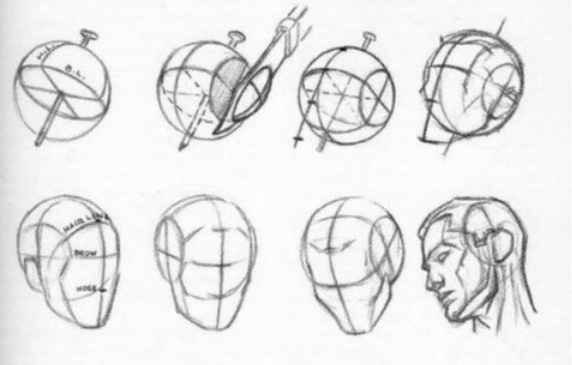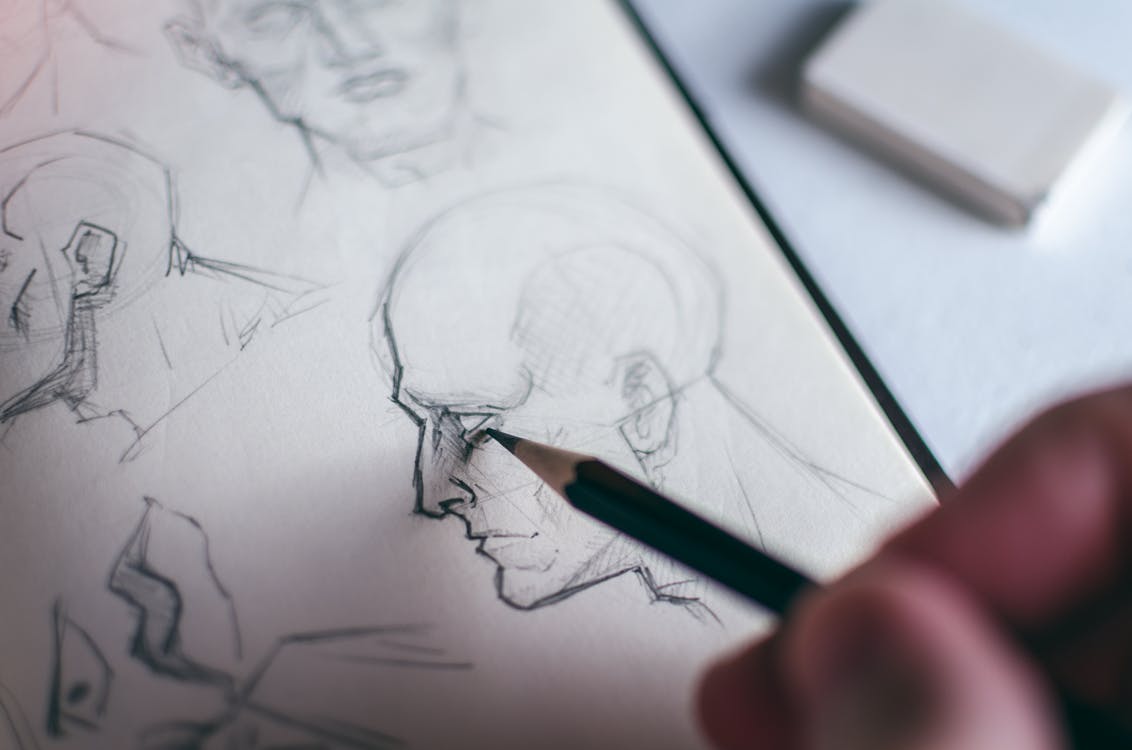Do you find yourself unable to draw for no apparent reason?
You can't even draw something half-decent on paper, no matter how hard you try.
I believe that every artist has experienced this at least a few times in his or her life.
Thus, let's discuss why that is and what you may do to change it.
Why Do You Think You're No Longer Able to Draw?
There are just two situations that can lead you to believe that you can no longer draw well:
- After a Long Break
- Unexpectedly Poor Drawings
Let's take a closer look at each scenario:
Bad Drawings After A Long Break
It's common to believe that your skills have declined if you haven't painted or drawn in a long.
You could even feel completely inexperienced as an artist when you first try to get back into it.
Take me, for instance:
I've been drawing for the majority of my life, however, there was a 2-year break.
In 2020, I picked up sketching again, and at first, I felt like a complete beginner.
Here are some of the causes of that:
Reason #1: You Are Simply Unpracticed
After a pause, you are simply out of practice, which is why you feel like a total novice.
Can you ever lose your artistic talent?
Drawing and painting are talents that can be learned by anybody, but they require practice to keep up.
You can't expect to take a long pause from doing art and maintain your skill level entirely.
Artistic abilities must be fostered or they will wither away over time.
What you can do: Start drawing again on a daily or regular basis.
Start practicing frequently again if you feel unprepared after a break. It's a straightforward (and apparent) approach.
If you can, try to get back into the routine of sketching every day.
Initially, be willing to accept the possibility that your drawings may not be as good as they formerly were. Try to push through it, and you'll soon realize that you'll be back in form.
If you put in the effort to practice, you could even get better than ever.
Check this course: Putting Art Into Practice
Reason #2: You've lost motor skills
Drawing and painting have various facets.
You need to use your motor skills in addition to your visual and cerebral abilities when sketching.
This ties into point #1, but effective art requires a certain level of ability with a pencil, pen, or brush.
If you don't utilize it, your dexterity will decline over time.
What You Can Do: Play around with doodles to hone your motor skills.
You should practice using your pencil, pen, or brush once more. (By the way, here are all the art supplies I use.)
You don't need to make amazing paintings to do that; you may just doodle.
You may relieve the strain of having to produce drawings that live up to your high expectations of yourself by simply making little doodles and scribbles.
However, you may still get back into the swing of things and improve your motor skills by sketching arbitrary shapes and lines.
After a lengthy vacation from sketching, that can be just what you need.
Unexpectedly Poor Drawings

|
| Source: Distractify |
The second situation is when you suddenly feel like you can't draw anymore, seemingly out of nowhere, from one day to the next.
Possible explanations for it include:
Reason #1: Art Block / Depression
The dreaded "art block" can be one factor behind your sudden inability to draw.
The phrase "art block" refers to the situation where a creative person fully runs out of things to draw, loses all inspiration, and loses all desire to continue drawing.
In severe circumstances, this may even result in depression.
What You Can Do: Take a Break from Art for a While
Simply taking a break from art for a while works best as a remedy for art block.
For as long as is necessary, refrain from creating any artwork.
Try not to think about constantly sketching if you no longer find it enjoyable; doing so will only worsen the situation.
Be mindful of this.
Embrace a few of your other interests. Spend some time with your loved ones.
If you have a true passion for painting, your drive to draw and your creativity will eventually return.
If you're a professional artist who also has debts to pay, it's challenging to achieve this. You can't just stop drawing for a few days or weeks.
But the truth is as follows:
Professional artists have often grown past this and accepted that there will always be ups and downs when honing their skills.
They simply carry on with their everyday routines having long since accepted it.
In light of that, here are 10 more strategies for overcoming art block. You are now prepared!
Reason #2: Poor fundamentals

|
| Source: starkickfall |
Another cause can be that you don't truly understand the principles.
There are several aspects to making art:
anatomy, proportions, perspectives, colors, values, composition, lighting, and shading,...
One of those areas is possibly catching up to you since you forgot to study it.
What You Can Do: Return to the Fundamentals
Resuming your basic practice is a straightforward approach.
The journey of being an artist must be acknowledged.
It's not as if you practice anatomy for a few weeks and then you're done with it, for instance.
It's a lifelong process and a learning opportunity.
Your art will advance if you acknowledge the need to consistently enhance the basics and start doing so. It's possible that the feeling of "I can't draw anymore" will pass shortly.
>>Check this course about Basic Fundamentals<<
Reason #3: You Haven't Practiced Enough Or Correctly
The fact that you haven't been training properly or enough is a third potential explanation.
Drawing and painting from life require ongoing practice, just like everything else.
You won't improve — or get worse — if you don't work on honing your abilities and stick to what you already know how to draw.
Your abilities will deteriorate!
What You Can Do About It: Improve Your Practice
Stop illustrating the same things over and over again.
Put yourself to the test!
Restart your practice, but this time, do it properly. Include some time for focused practice with the goal of refining your craft.
Additionally, you may always draw in greater detail; but, you should pick themes that include elements (such as certain stances, lighting conditions, viewpoints, etc.) that you must first have expertise sketching.
This can help you recover more quickly, and it is a guaranteed technique to get rid of the sense that you are suddenly unable to draw.
In fact, I've produced a manual that shows you step-by-step how to practice sketching properly.
In Summary,
You lost your ability to draw because you took a (long) hiatus from it, practiced improperly or insufficiently, and maybe ignored the fundamentals.
You may overcome this by resuming daily drawing, improving your technique, and going back to the fundamentals.
If you've had a similar situation, please share it in the comments along with how you overcame it.





